Photos taken by Ilan Barnea, (Washington University in St. Louis ), CET Prague, Spring 2025
Krakow
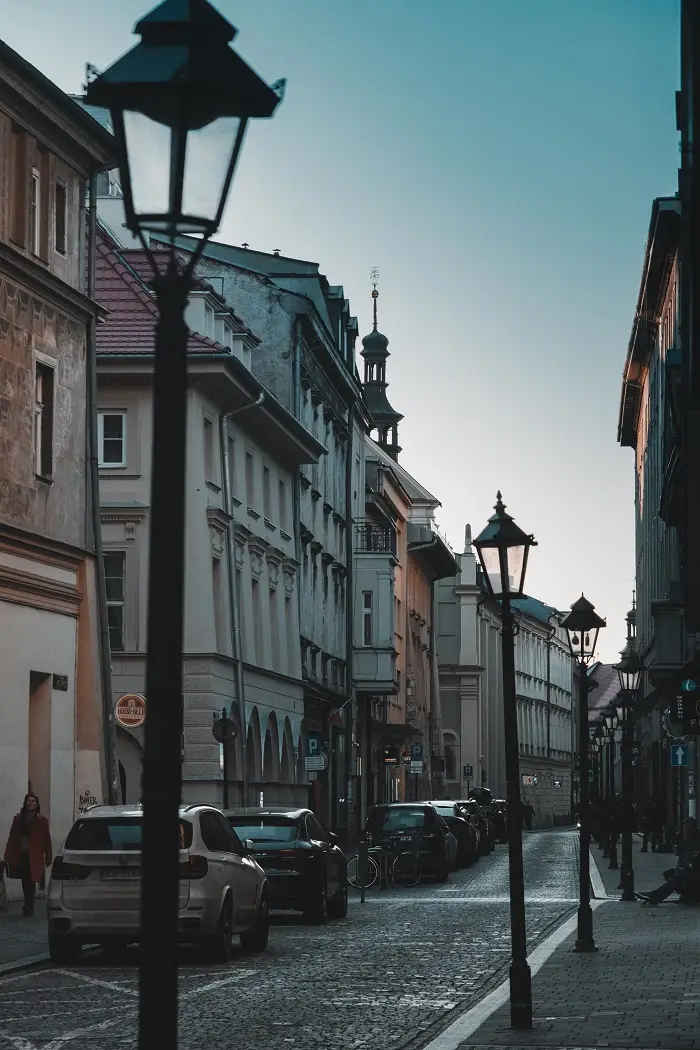
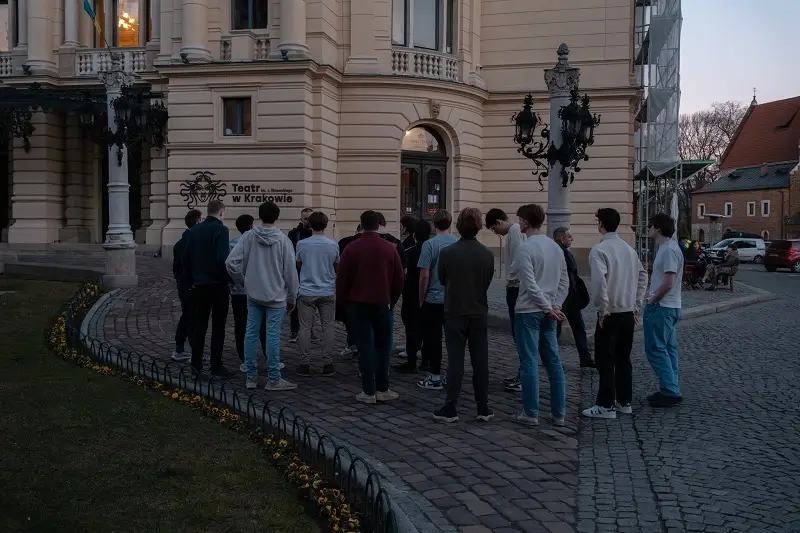
Our first stop on the Traveling Seminar was Krakow. I had never been to Poland or even this far east in Europe, despite my grandmother being born in Poland so I was so excited to see Krakow. Poland is the center of a lot of discussion in our classes, specifically our core Central European Studies Course: The Political and Cultural History of Central Europe.
After arriving at our hotel, we had some free time to walk around the city, followed by a walking tour of the city. The walking tour was very interesting, we had a Polish tour guide so we got a recounting of the history, specifically World War II history, but more from the Polish perspective and got to see the exact sites we talked about in class and how it impacted the modern Polish psyche.

The tour ended with dinner in a really cool authentic Polish restaurant where I got to try excellent Perogies and Polish beer. Overall, excellent first night in Poland. It was really cool to see the place where a quarter of my family comes from and a place that is so influential in modern European history, specifically in the context of World War II and Jewish history.
Mikulov
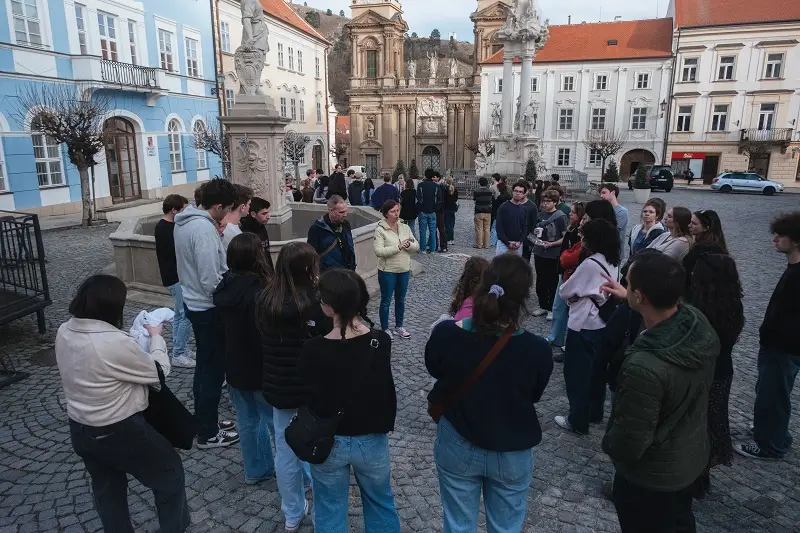
After Krakow we made our way back into the Czech Republic, but this time, Moravia, the other side of the country, a different region then Prague’s with different cities and styles of living. One of the towns we stopped in was Mikulov, a small city on the border with Austria with lots of historical significance. The city is known for its white wine as the land all around is perfect for its vast number of vineyards.
When we first arrived, we put our stuff in our quaint hotel and then had a walking tour of the city. The air was so fresh and crisp, you could smell the temperature change as the sun set. Just breathing was one of the most incredible things I have done since arriving in Europe, and that’s saying a lot.
The tour was incredibly interesting as we learned the rich history of the city, including that due to its proximity to Austria it was annexed to Germany after the Munich Agreement and Hitler himself came to this city on his “tour” of the Sudetenland (German populated regions of the Czech Republic before World War II). This was a direct tie to our class as we have learned a lot about the Munich Agreement, however my mind always situated Western Czechoslovakia as being impacted, so seeing that the eastern part was as well was very eye-opening.
Moreover, during the communist era, Mikulov was used as a defection point for many people due to its proximity to Austria and the west. Overall, the tour was incredible and we got to see what would end up being one of my favorite cities I think I have ever visited in my life through a historical lens.

After our tour of the city we had an optional hike to a church at the top of a mountain overlooking the city. Almost everyone participated and it was a great bonding moment as we witnessed an incredible sunset over the valley and the castle of Mikulov. The hike was beautiful, the sunset was beautiful, the overall experience was just beautiful. We talked, took pictures, and laughed before heading back down to shower and get ready for dinner.
Vienna
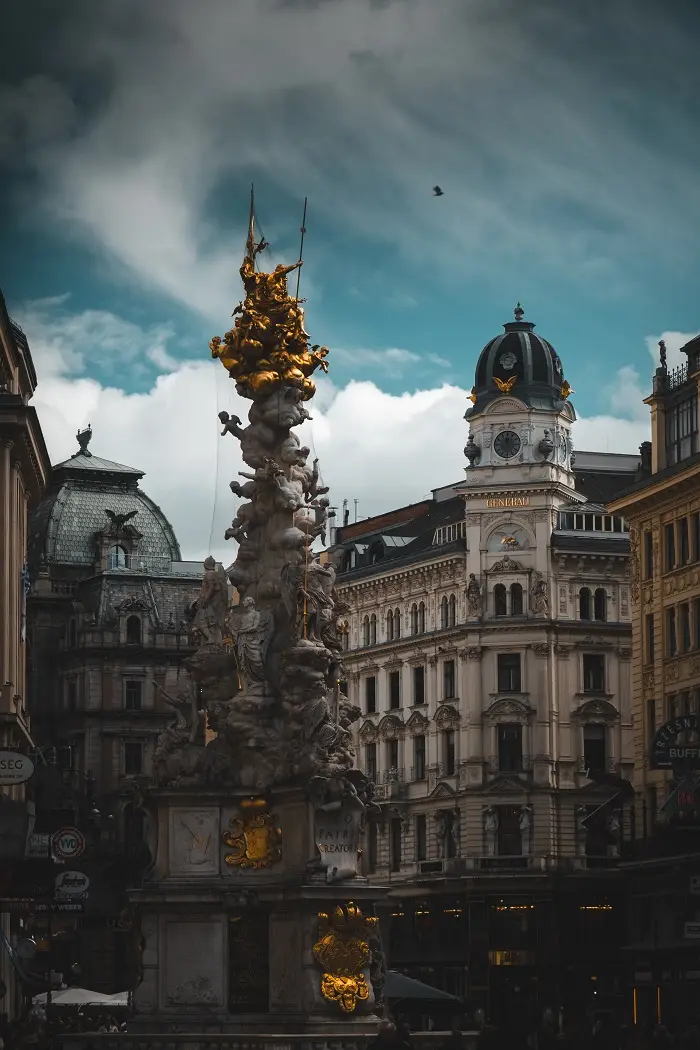
Our Traveling Seminar ended in Vienna, one of the most incredible combinations of modern and old-fashioned architectures I have ever seen. We walked so much in the two days we had in the city as we didn’t want to miss out on any part of the city. When we first arrived in Vienna we had free time to go get some food. Per CET’s recommendation, we went to the Vienna Naschmarkt, an open air market with a bunch of different types of local Viennese food. Vienna is one of the most incredible cities I have ever been to and CET did such an incredible job showing it to us, from the walking tour we had to the lectures from local scholars about how the city came to be the way we see it today.
Budapest
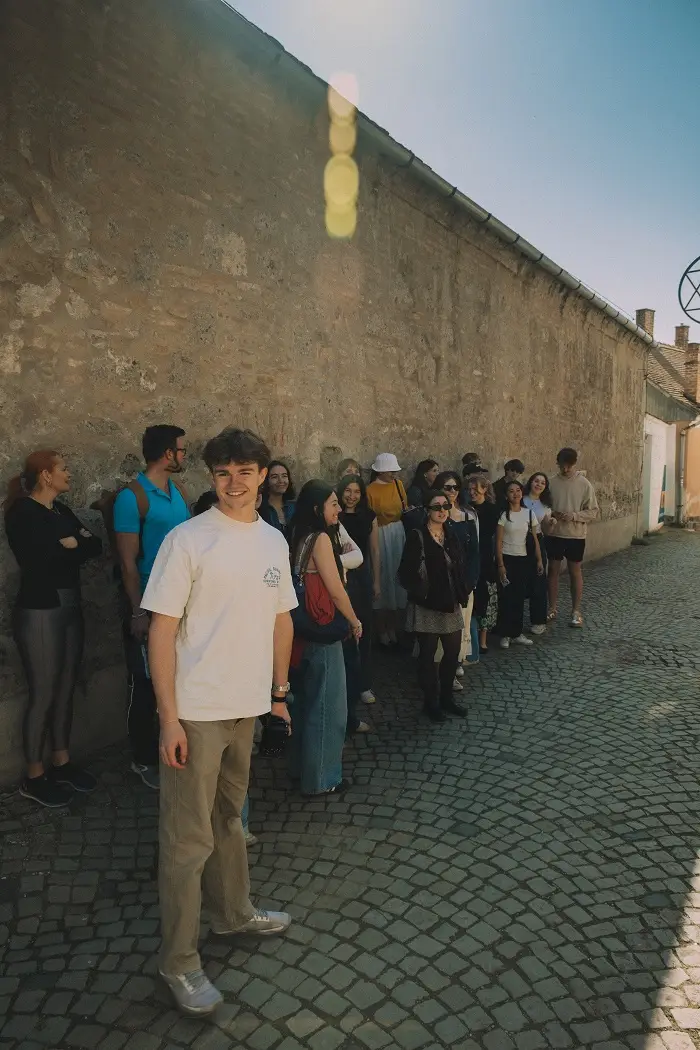
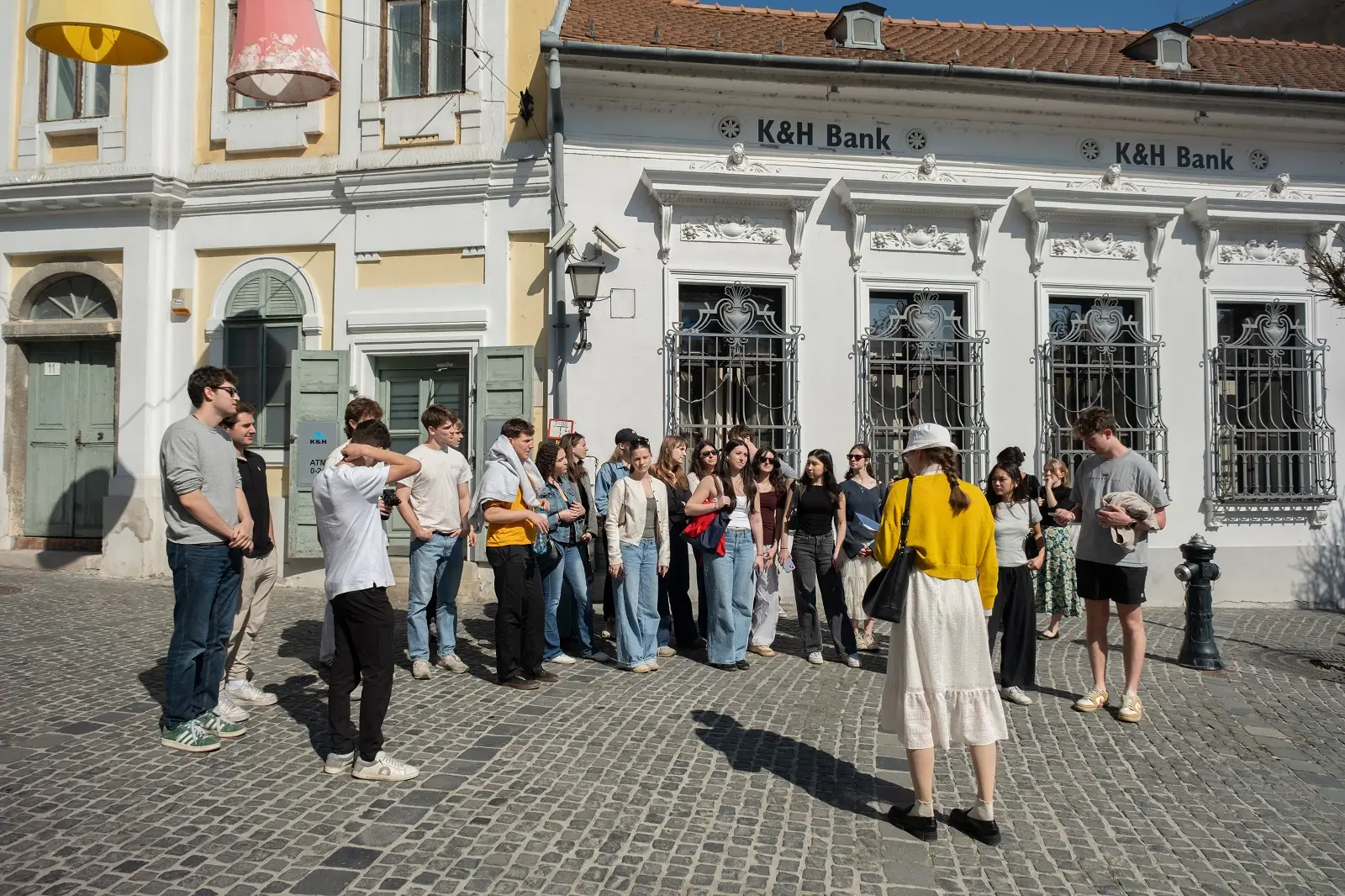
During our second, and final, Traveling Seminar, CET took us to Budapest, another beautiful central European city, located a 5 hour drive from Prague in Hungary. During our first day in the city, CET took us to Szentendre—a beautiful, small, and quaint town just outside of the city.
Szentendre was colorful, with unique Baroque architecture and lots of history. It reminded me of Česky Krumlov in a way. We started with a walking tour of the city which was very cool because it was led by one of the CET staffers and because we learned all about the Christian and Jewish history of the city. Then we had some free time to go around the city and see it for ourselves. It was such a beautiful day, so we sat on a bench in the main square and soaked in the sun.

The next day we had a walking tour of the city, they split us up into our core course groups and took us to many relevant locations to our classes. The walking tour was truly fascinating because it integrated Hungarian culture, with the history of Budapest, as well as how all of it pertains to our class with regards to Political and Culture History of East Central Europe in the 20th Century—the name and topic of our class. My favorite part was a the end when they took us into the Hungarian Parliament building. I think that might have been one of, if not the single most beautiful building I have ever seen. The inside is jaw-droppingly gorgeous and has so much history that even directly ties to that of the Czech Republic, as both countries were under Austro-Hungarian rule for hundreds of years.
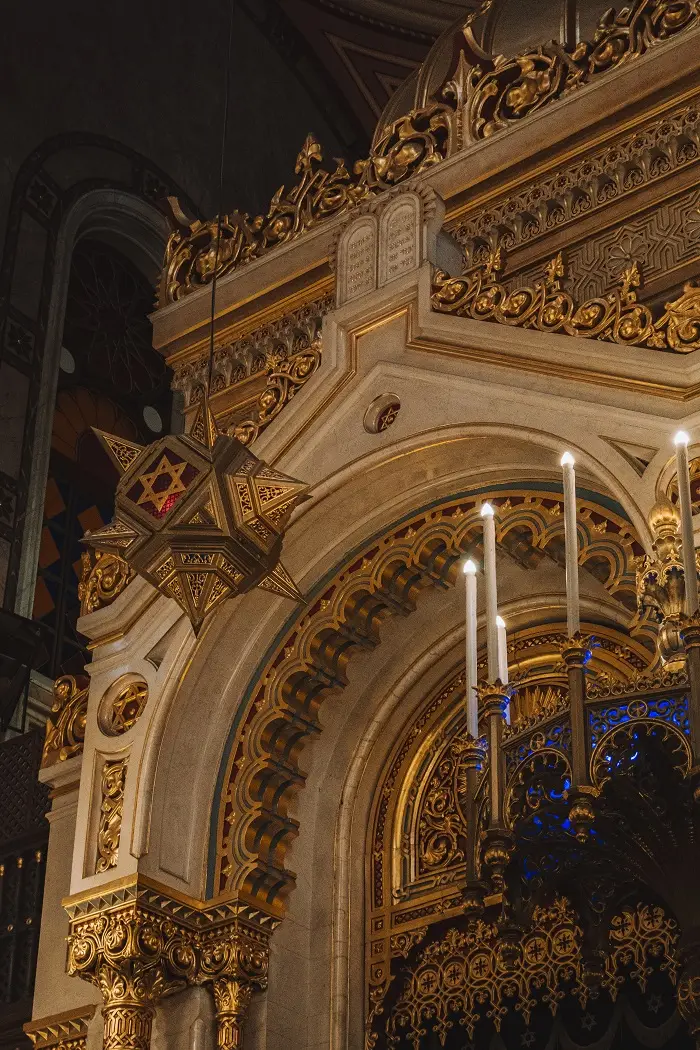
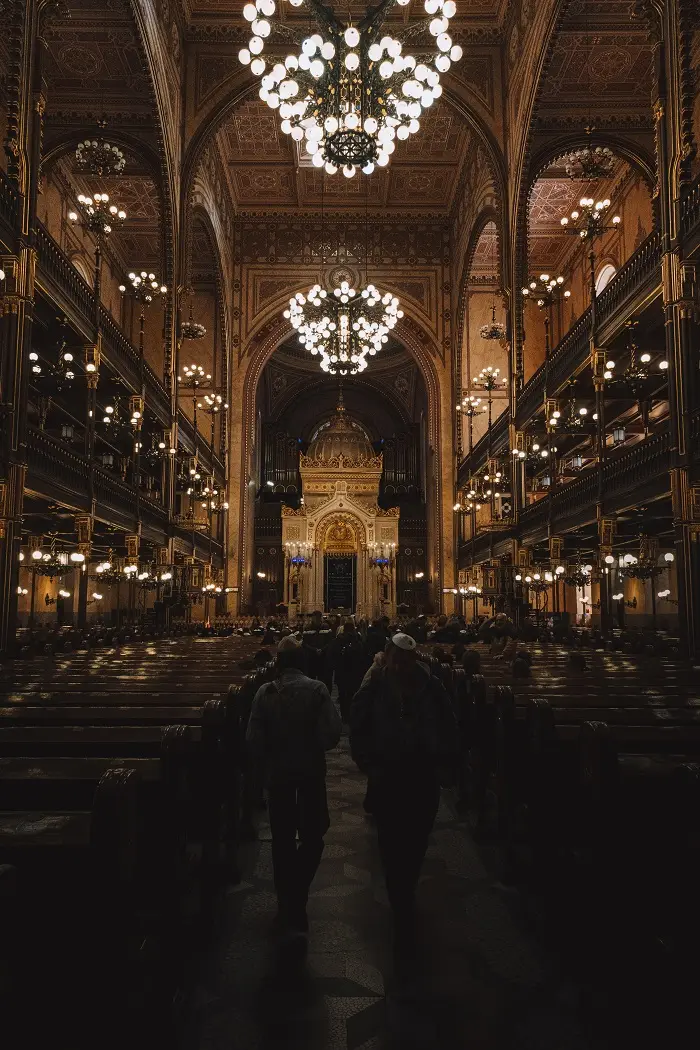
The last morning in Budapest we were given free time to explore the city on our own, my roommate and I took the time to explore the largest synagogue in Europe—The Dohany Street Synagogue. This synagogue is one of the most beautiful I have ever seen. It was so large and had so much history to it. Fun fact, its still active and can seat up to 3,000 people. There was lots of culture to the synagogue that reflected the lifestyle of Hungarian Jews and what they went through during the Holocaust, as well as museum and memorial aspects to it in remembrance of the innocent lives lost.